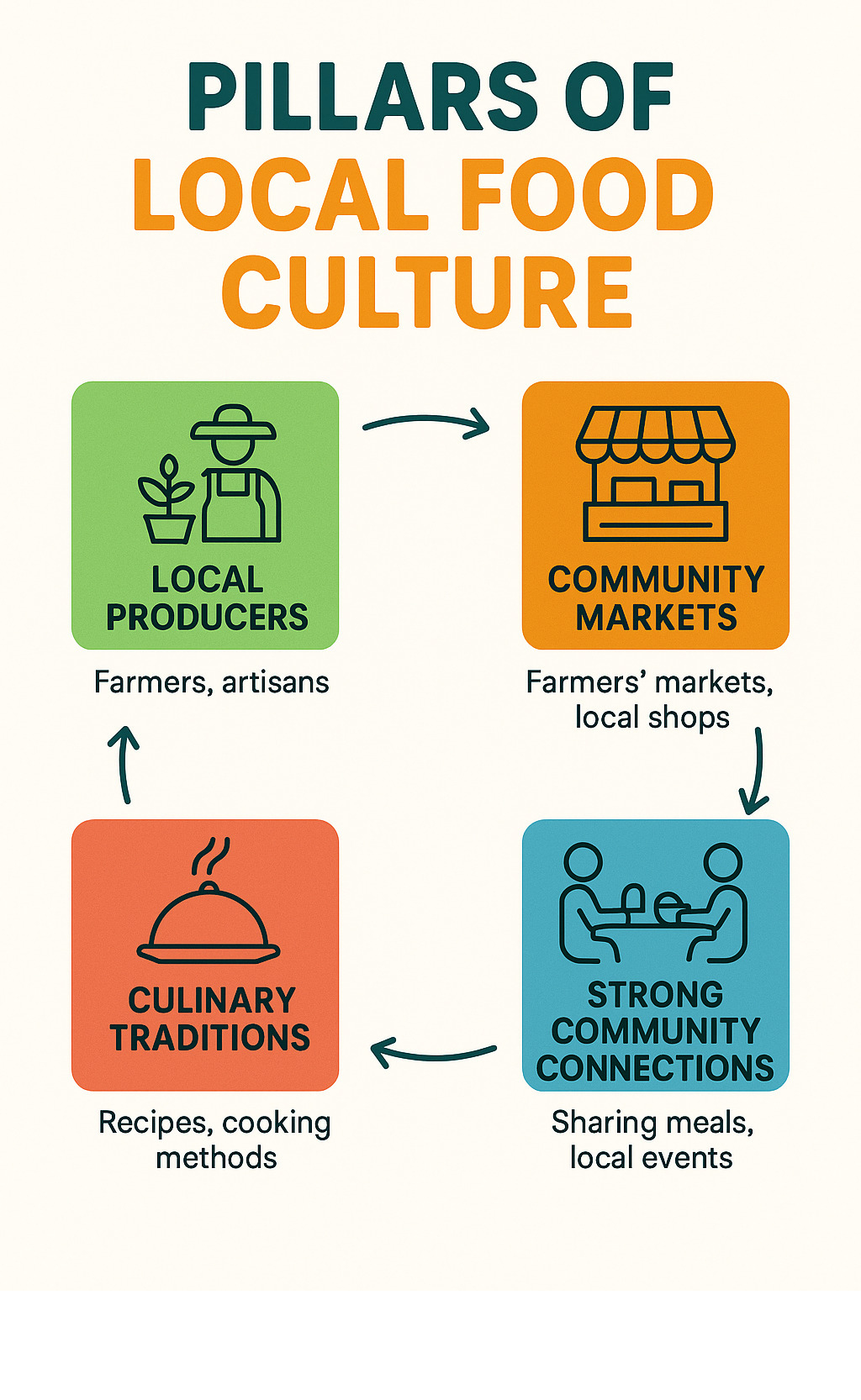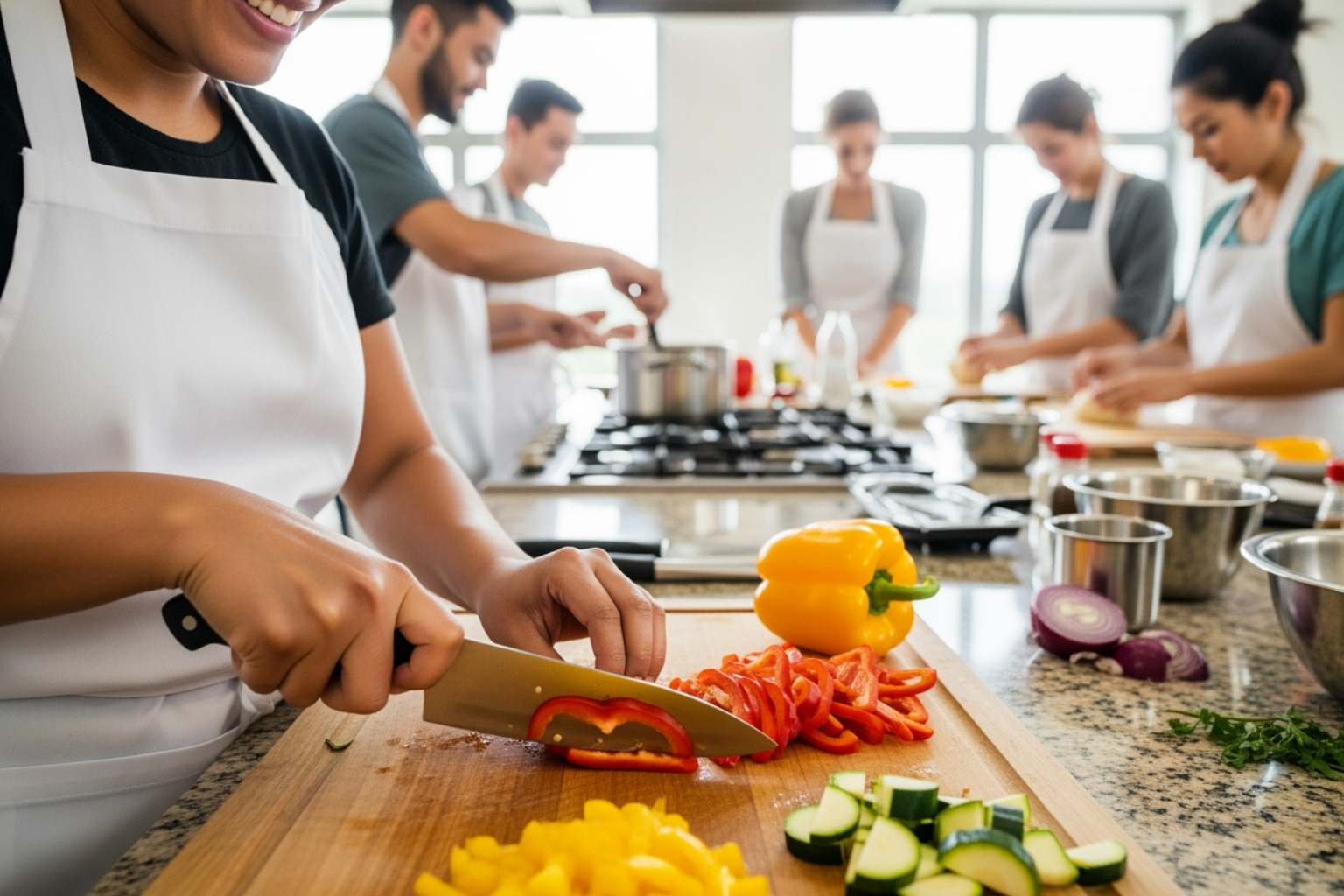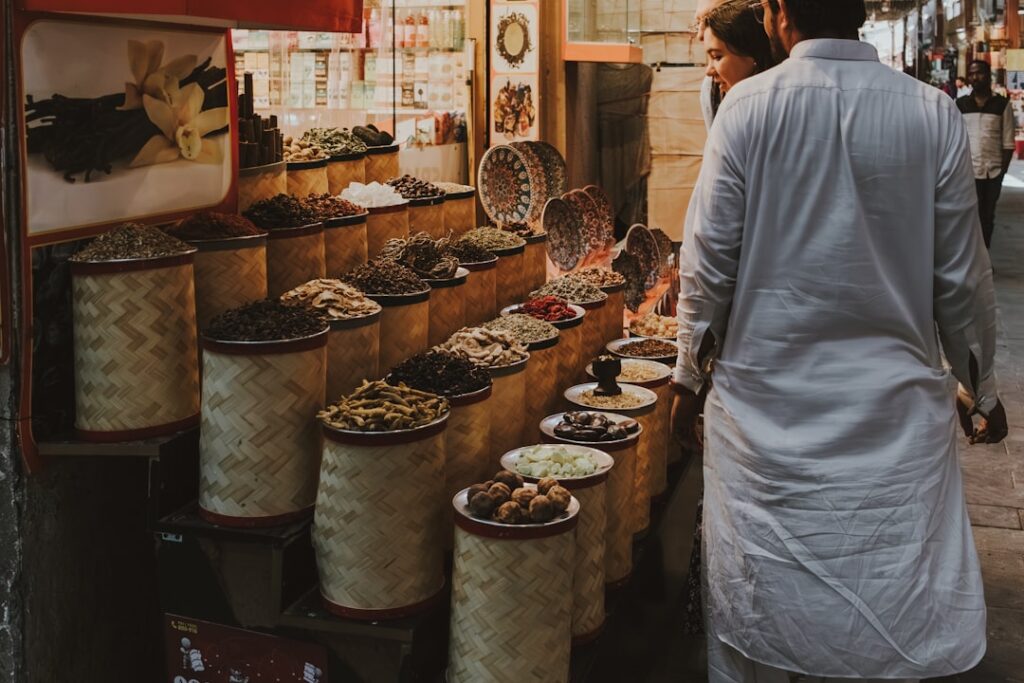Why Understanding Local Food Culture is Your Next Culinary Trip
When we talk about local food culture, we’re diving into something more than just what’s on your plate. It’s about where food comes from, the people who make it, and the stories behind every dish.
Here’s a quick look at what defines it:
- Geographic Connection: Food is grown, raised, and eaten within a short distance. This could be within 400 miles, or just your county.
- Cultural Identity: Food reflects a community’s history, traditions, and values. It’s passed down through generations.
- Community Building: Sharing food brings people together. It creates a sense of belonging and pride.
- Economic Support: Buying local keeps money in your community. It helps local farmers and small businesses thrive.
Every bite tells a story. The food you eat in a new place offers real insights into the history and traditions of its people. It’s a key part of travel and even relocating.
This guide will show you how to find these authentic tastes and connect with the heart of any community through its food. Get ready to turn every meal into a findy.

Local food culture terms at a glance:
What Exactly Is ‘Local Food Culture’ and Why Does It Matter?
At its heart, local food culture is the web of activities and relationships bringing food from farm to plate within a specific area. It’s about knowing your food’s origin, transparency in its creation, and building community around shared meals.
A true local food system includes everything from growing and preparing food to marketing and selling it, all with the goal of creating a deeper connection between you and the food you eat.
What does “local food” mean? The definition varies. For some, it’s food from within a state or a 400-mile radius (a past USDA suggestion). For retailers, it’s often within a county. For tight-knit communities, it can be even more specific. This flexibility shows ‘local’ is more than geography; it’s a connection and a commitment to a shared way of life. It also means fewer food miles, which benefits freshness and the planet.
Local food culture matters because food is a cornerstone of every culture. It’s how we express ourselves, connect, and pass down traditions. Family recipes, cooking methods, and shared meals are all forms of intangible cultural heritage, passed down through generations. They reflect a community’s values. Understanding a place’s food means understanding its people.
The Core of Local Food Culture: How Food Shapes Identity
Every plate of food tells a story of personal history, cultural identity, and historical events. The food we eat reflects our past, traditions, and values, offering a peek into how people live.
For many, childhood foods are a direct link to heritage, especially for immigrant families. Learning about a culture’s food fosters a deeper appreciation for its people. It’s like tasting history.
Family recipes, passed down through generations, carry stories and memories, tying families and communities together. Sharing a meal is a universal experience that builds a sense of belonging, breaking down cultural barriers. The passionate debates over dishes like Jollof rice exemplify how deeply food is tied to cultural pride.
Immigrants enrich local cuisine with their traditional dishes, creating unique flavors like the diverse food scene in New York City, shaped by generations of newcomers. The popularity of pizza, tacos, and sushi across America shows how adaptable and vibrant local food culture can be—always evolving while honoring its roots. Learn more about this trend in The Flavor Fusion Trend: Mixing Cultures on a Plate.
Defining ‘Local Food’: More Than Just Miles
The term “local food” can be confusing, as its meaning shifts depending on the context. It’s more complex than just mileage. Here’s a look at some common definitions:
| Definition Source | Criteria for “Local Food” |
|---|---|
| USDA (2008 Farm Act) | Produced and distributed in a limited geographic area; end-point purchase within 400 miles from origin or within the state of production. |
| Most Retailers | Products produced and sold within county lines or a smaller scale than the state level. |
| Community-Based (e.g., Northeast Indiana) | Grown, raised, produced, sold, and eaten within a specific region (e.g., 11 counties). |
| Philosophical/Cultural | Associated with a social structure and supply chain different from large-scale systems, fostering community connection and transparency. |
This variety shows that “local” is about the relationship between producers and consumers, not just geography. The shift towards buying direct is clear: direct-to-consumer sales jumped 49% ($399 million) between 2002 and 2007. This growth reflects a demand for transparency and knowledge about food origins.
The ‘foodshed’ concept, similar to a watershed, helps track food from origin to destination. It encourages us to know our farmers, understand their practices, and appreciate the story behind our food. This direct connection builds trust and helps us make choices that align with our values, creating a stronger food system where knowing your farmer is key. Find out more in Why Locally Sourced Ingredients Make a Difference.
The Powerful Benefits of Embracing Local Food
Embracing local food culture offers benefits far beyond taste, positively impacting our economy, environment, social fabric, and well-being. Choosing local is an investment in our communities and future.
The hyperlocal food movement reflects this growing awareness. People recognize food as a powerful tool for change, from supporting small businesses to reducing our carbon footprint.
Economic and Environmental Advantages
The economic ripple effect of buying local is significant. Purchasing from local producers keeps a larger portion of money in the community—about 65% compared to 40% at chain stores. This recirculated money creates jobs and sustains local areas, as small businesses are the largest national employers.
This support creates jobs and improves regional food security. A robust local food system builds a more resilient economy.
Environmentally, supporting local food helps preserve farmland and reduces “food miles”—the distance food travels. This cuts fossil fuel use, pollution, and emissions. While dietary shifts may have a larger climate impact, buying local remains a key part of a sustainable strategy.
Local food systems also promote eco-friendly practices. Direct-marketing farmers often use sustainable methods, and buying local helps preserve genetic diversity in crops. It’s a win for our wallets and the planet.
Social and Personal Well-being
Beyond economic and environmental gains, local food culture nurtures our social fabric and health. Connecting with local producers builds relationships, trust, and community pride. Chatting with a farmer at a market or hearing a recipe’s story at a local eatery creates a strong sense of place and belonging.
The social aspect of food is vital. Sharing meals builds bonds. Farmers’ markets and family-owned restaurants become community hubs, fostering interaction and a shared appreciation for good food.
From a health perspective, local food is often fresher. Harvested at peak ripeness, it retains more nutrients and flavor. This can lead to better nutrition and healthier choices. Shorter, transparent supply chains in local food systems can also reduce food safety risks. Knowing your producer allows you to ask about farming practices, giving you peace of mind about what you’re eating.
How to Immerse Yourself in a New Food Scene
Moving to a new town or just visiting? It’s the perfect chance to dive into the local food scene. Exploring a place through its food is a great way to find the real, local flavors that tell its story.
How do you do it? Start with farmers’ markets for fresh tastes. Seek out cozy, family-owned local eateries. Get hands-on with cooking classes. Attend community events and food festivals. Most importantly, talk to the locals for the best secrets. And be sure to document your journey to remember all your delicious finds.
Authentic Local Food Guides can also be a great starting point for your culinary trips.
Exploring Your Local Food Culture: A Practical Guide

When in a new place, our first stop for local food culture is the farmers’ market. They’re bursting with energy, color, and fresh produce. We love chatting with vendors—often the farmers themselves—who happily share tips, cooking ideas, and info on unfamiliar ingredients. It’s like a mini cooking lesson with every purchase.
After the market, we eat at local eateries, especially family-owned spots with a long history. Here you’ll find authentic regional dishes from generational recipes. The staff can point you to menu highlights and hidden gems not found in travel guides.
Ask locals for recommendations; they’re often happy to share favorite spots and recipes that define their food heritage. Local culinary events, like food festivals, are another great way to dive in. They showcase a region’s best food, uniting farmers, chefs, and the community. Find more ideas on our Local Culinary Events page.
Finally, documenting your culinary journey—through a journal, blog, or social media—helps you appreciate each experience. It creates a useful guide for yourself and others, letting you savor the memories long after the meal.
Learning the Language of Local Cuisine
To truly appreciate a local food culture, go beyond just eating—dive into the art of cooking. Taking a cooking class is a rewarding way to learn about a culture and its people.
For example, learning to make fresh pasta in a class in New York City teaches you more than a recipe; you learn about the history of Italian-American immigration and its impact on the city’s cuisine, offering insight into cultural traditions. These classes teach traditional methods using regional ingredients. Understanding the ‘why’ behind each step reveals the history and cultural meaning. You can Find Local Cooking Classes for Fun in many places!
Sharing recipes and cooking with locals is another beautiful way to connect. Making a meal together, sharing stories, and enjoying the result creates lasting memories that transcend language barriers. This is how you learn a culture’s subtle flavors and kitchen rhythms. For us, this is where the magic of local food culture shines—in the joy of a shared meal.
The Bigger Picture: The Local Food Movement and Its Nuances
The local food culture is a powerful movement changing how we think about food, community, and the planet. The growing interest in local food systems has led to the “locavore” movement. However, this change brings challenges, particularly regarding food safety and equitable access to healthy, local food.
The Growth of the ‘Locavore’ Movement
The growth in local food interest is clear from the numbers. Between 2002 and 2007, direct-to-consumer sales of farm products soared by 49% ($399 million). The number of U.S. farmers’ markets nearly doubled between 1998 and 2009, reaching over 5,000.
Community Supported Agriculture (CSA) programs grew from two farms in 1986 to over 1,000 by 2009. Farm-to-school programs also increased by 50% from 2006 to 2009, reaching nearly 9,000 schools in 41 states.
The trend extends beyond home cooks. By 2007, over 87% of fine-dining restaurants served local items. At the same time, the number of U.S. home gardeners grew by 19% between 2008 and 2009, with 43 million households growing food.
This excitement was captured when “Locavore” was named the New Oxford American Dictionary’s word of the year in 2007. The hyperlocal food movement is clearly here to stay, changing how we connect with our food.
Challenges and Considerations: Food Safety and Access
While the growth of local food culture is exciting, it raises important considerations like food safety and access. For small producers, food safety can be a challenge. Unlike large companies, they are often small operations, run by a few people who invest their own money and tie their identity to their business.
Therefore, food safety training for small producers must be practical and custom to their needs, focusing on how good practices lead to success. While shorter local supply chains can reduce some risks, issues like allergen cross-contact remain a concern. State-specific Cottage Food Laws, which regulate home-based food businesses, are also important but vary widely.
Beyond safety, ensuring access to culturally significant foods is crucial. Food is a core part of identity, representing heritage and history. Food banks increasingly recognize this, working to provide culturally specific foods that connect people to their roots. Offering diverse, culturally relevant choices helps fight hunger while preserving cultural identity and community. This dedication to preserving cultural foods through community support nourishes both body and soul.
Frequently Asked Questions about Local Food Culture
We often get questions about local food culture, especially from those exploring new places. It’s natural to wonder how to experience the heart of a community through its food. At The Dining Destination, we help you find authentic culinary gems. Here are answers to some common questions.
How do I find authentic local food when traveling?
Finding authentic local food is a rewarding part of any culinary trip. Our top tip is to talk to the locals! Ask hotel staff, shopkeepers, or people in a park for their favorite non-touristy spots. They know the hidden gems where families eat and where dishes tell a story.
Avoid big chains and seek out family-owned establishments where authentic regional cuisine shines. Visiting a farmers’ market is another great step. It’s a vibrant hub to see what’s in season, taste local produce, and chat with farmers.
Step outside your comfort zone and try new things; our best finds are often unexpected. For a deeper dive, join a local cooking class or a food tour with a passionate guide for insights into the history and culture behind the dishes.
What is the difference between ‘local food’ and ‘street food’?
These terms are often confused but mean different things.
‘Local food’ refers to food that’s grown, produced, and consumed within a specific geographic area, emphasizing the origin of the ingredients. It can be a gourmet meal or a home-cooked recipe, as long as the ingredients haven’t traveled far.
‘Street food’ describes food sold by vendors in public places like stalls or food trucks. While much street food is inherently local, not all local food is street food (e.g., a farm-to-table restaurant). The key difference is the method of sale for street food versus the origin of ingredients for local food.
Is eating local always more expensive?
Not necessarily. While some direct-from-farm or artisanal products at farmers’ markets can have a higher price tag than supermarket items, this is because local producers lack the economies of scale of large operations. Their prices often reflect the true cost of sustainable farming, higher quality ingredients, and fair labor.
However, “expensive” is relative. When buying local, you’re paying for superior freshness, better flavor, and more nutrients. You’re also supporting your community, helping local farmers and small businesses thrive. This value extends beyond the price tag.
You can find deals on seasonal produce at farmers’ markets, especially near closing time. Buying in bulk from a farm can also save money. Plus, many family-run eateries offer authentic meals at reasonable prices. While some local items might cost more upfront, the overall benefits of supporting your community and eating fresher food often outweigh the expense.
Conclusion
Local food culture is more than what’s on your plate; it’s a mix of history, tradition, community, and land. We’ve seen its economic benefits for communities and its support for environmental health. It builds social connections through shared meals and provides you with fresher, more nutritious food and the peace of mind of knowing its origin.
At The Dining Destination, we believe food is a universal language for connecting with different cultures. Seeking out authentic local dishes, talking to producers, or trying traditional cooking offers experiences richer than sightseeing. These culinary trips deepen our appreciation for global diversity, reminding us that every bite holds a story.
Your next culinary trip is calling, whether across the globe or in your own city like New York City. Accept the journey, taste the local stories, and let your palate guide you to new findies.









